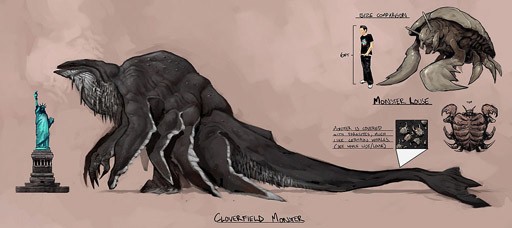In our current YouTube- and camera phone-saturated culture, bankable television producer J.J. Abrams (Lost, Alias) hit on quite the clever idea to make a movie imbued with the realest of realism that comes from fictitious found footage. And if there was any genre that needs a good Blair Witch-ing, it’s the oh-so-tired monster movie formula. In the recent box office buster Cloverfield, that whole monster part of the story is indeed sufficiently unique and exhilarating. But for a movie intent on keeping it real, why did writer Drew Goddard insist on saddling his stars with clunky dialogue and a painfully contrived storyline?
For those who haven’t yet seen the film (but don’t mind having it spoiled), it’s fairly amazing that Cloverfield manages to squeeze even a scant 77 minutes of a movie out of a premise that should logically be limited to “Monster attacks New York. We get the fuck out of town. The End.” By having the gang of protagonists get the brain-dead idea to literally run directly into the rampaging beast’s path in an attempt to rescue their trapped friend, the plot is extended.
The reasoning? Leading pretty boy Rob is madly in love with the damsel in distress and in desperate need to save her because of the piss-poor way he treated her earlier that very evening. Now, my heart is not in fact made of stone, but I would hope that my lady friend would understand if, after finding out she was trapped under several tons of rubble and an ornery sea monster’s butt, I text-messaged my heartfelt goodbye and took the nearest freeway exit out of town. Maybe it’s Abrams’ television roots that made him believe this soap opera storyline would work on the big screen, but he seems to have forgotten that the heroes in a film are the people we’re supposed to relate to. And any audience member looking for more than an ear assaulting sound mix will undoubtedly spend most of Cloverfield’s running time trying to figure out why these people who we’re supposed to care about are total idiots.











